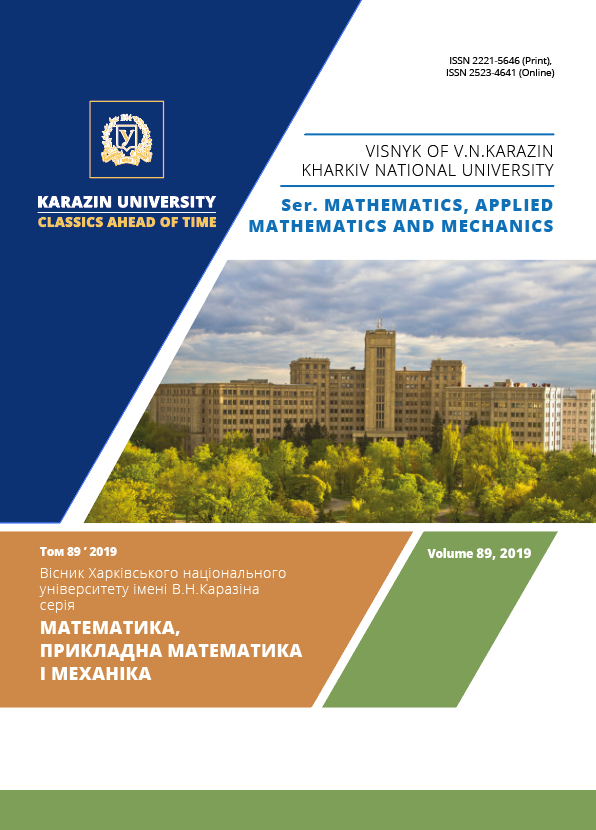Time-optimal control problem with two final points for a kinematic model of an UAV
Abstract
We study the time-optimal control problem for an unmanned aerial vehicle (drone) moving in the plane of a constant altitude. A kinematic model is considered where the angular velocity is a control. Such a system is described by Markov-Dubins equations; a large number of works are devoted to solving different optimal and admissible control and stabilization problems for such models. In the papers [T. Maillot, U. Boscain, J.-P. Gauthier, U. Serres, Lyapunov and minimum-time path planning for drones, J. Dyn. Control Syst., V. 21 (2015)] and [M.A.~Lagache, U. Serres, V. Andrieu, Minimal time synthesis for a kinematic drone model, Mathematical Control and Related Fields, V. 7 (2017)] the time optimal control problem is solved where the drone must reach a given unit circle in the minimal possible time and stay on this circle rotating counterclockwise. In particular, in the mentioned works it is shown that is this case the problem is simplified; namely, the problem becomes two-dimensional. In the present paper we consider a natural generalization of the formulation mentioned above: in our problem, the drone must reach a given unit circle in the minimal possible time and stay on this circle, however, both rotating directions are admissible. That is, the drone can rotate clockwise or counterclockwise; the direction is chosen for reasons of minimizing the time of movement. Such a reformulation leads to the time-optimal control problem with two final points. In the paper, we obtain a complete solution of this time-optimal control problem. In particular, we show that the optimal control takes the values $\pm1$ or $0$ and has no more than two switchings. If the optimal control is singular, i.e., contains a piece $u=0$, then this piece is unique and the duration of the last piece equals $\pi/3$; moreover, in this case the optimal control ins non-unique and the final point can be $(0,1)$ as well as $(0,-1)$. If the optimal control is non-singular, i.e., takes the values $\pm1$, then it is unique (except the case when the duration of the last piece equals $\pi/3$) and the optimal trajectory entirely lies in the upper or lower semi-plane. Also, we give a solution of the optimal synthesis problem.
Downloads
References
T. Maillot, U. Boscain, J.-P. Gauthier, U. Serres. Lyapunov and minimum-time path planning for drones, J. Dyn. Control Syst. - 2015. - 1. V. 21. - P. 47-80.
M.A. Lagache, U. Serres, V. Andrieu. Minimal time synthesis for a kinematic drone model, Mathematical Control and Related Fields. - 2017. - 2. V. 7. - P. 259-288.
A.A. Markov. Some examples of the solution of a special kind of problem in greatest and least quantities (Russian), Communications of Kharkov Mathematical Society. - 1889. - V. 1. - P. 250-276.
L.E. Dubins. On curves of minimal length with a constraint on average curvature and with prescribed initial and terminal positions and tangents, American Journal of Mathematics. - 1957. - V. 79. P. 497-516.
А.F. Filippov. On some questions in the theory of optimal regulation (Russian), Vestnik Moskov. Univ. Ser. Mat. Mec. Astr. Fiz. Him. - 1959. - 2. - P. 25-32.
L.S. Pontryagin, V.G. Boltyanskii, R.V. Gamkrelidze, E.F. Mishchenko. Mathematical theory of optimal processes. 1961. Nauka, Moscow, 391 p.; Engl. transl.: John Wiley & Sons, Inc., New York-London, 1962.
The copyright holder is the author.
Authors who publish with this journal agree to the following terms:
1. Authors retain copyright and grant the journal right of first publication with the work simultaneously licensed under a Creative Commons Attribution License that allows others to share the work with an acknowledgement of the work's authorship and initial publication in this journal. (Attribution-Noncommercial-No Derivative Works licence).
2. Authors are able to enter into separate, additional contractual arrangements for the non-exclusive distribution of the journal's published version of the work (e.g., post it to an institutional repository or publish it in a book), with an acknowledgement of its initial publication in this journal.
3. Authors are permitted and encouraged to post their work online (e.g., in institutional repositories or on their website) prior to and during the submission process, as it can lead to productive exchanges, as well as earlier and greater citation of published work (see The Effect of Open Access).




